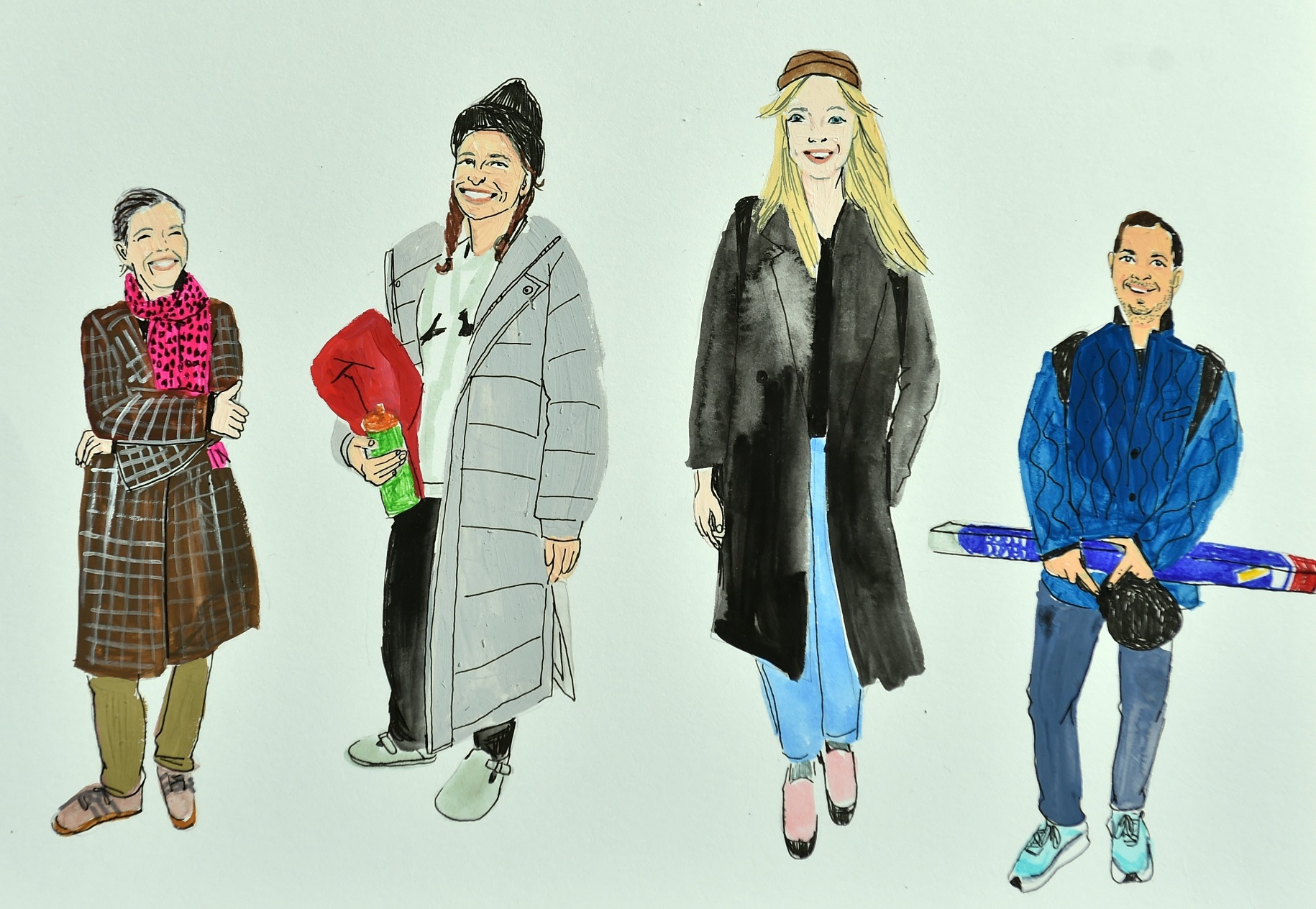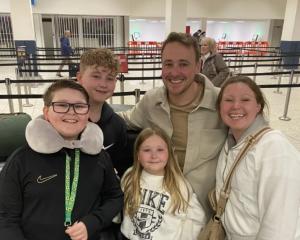Watching a film by Oliver Lucks, Julia Rothman was so impressed by his work she direct messaged to tell him so.
When she sent that email from her home in New York she had no idea two years later she would be sitting on the shores of a Dunedin beach enjoying an unseasonably warm summer while her friends and family were freezing back home.
It was 2021, the world was still in the grip of the Covid-19 pandemic and Rothman was doing her bit to connect and encourage creatives of all sorts with messages of support.
"I was reaching out to people whose work I thought was really great. It was a lonely time and I thought if I can’t connect with people I should connect through the internet more."
So she did not think anything of her message to Lucks but he replied and they continued to correspond. She asked him if he would take part in a book she was working on about the hard things people go through and how they got through them. It features interviews with 111 people and is due out in autumn.
"We kept chatting back and forth, then we zoomed each other and then he was like I’ll come to New York and meet you. I was like is this romantic or a work thing?"

"All my friends thought it was crazy, but it just worked out. We got married in April, so it was all very fast. Now I’m here as this is where Ollie considers his home."
The couple hope to make Dunedin home for at least three months a year — chasing summers. Their current trip began in Auckland and they travelled down the country with Rothman experiencing her first hike over six days in the Abel Tasman before they arrived in Dunedin.
Coming from New York she admits it was at first a "bit weird" but now she had got used to it and really liked it.
"Dunedin by far is my most favourite place ... Ollie says he saved the best for last. It reminds me of my college town a bit with the great vibrancy and a young artsy creative feel. It feels like there are more kindred spirits here."
Luckily both their careers are portable. Rothman is an illustrator. She has illustrated or authored more than 12 books, has an illustrated column in the New York Times and has created designs for wallpaper, bedding, billboards, fabric, clothing, posters, mugs and more. She also used to teach.
But it has been a hard slog to get to where she can enjoy the projects rather than wondering where her next meal is coming from.

These days she feels like she does not have to stress so much about making a living.
"When I was just out of school it was really hard. I was looking for every job I could get, doing work late at night. But over time it has built up. I feel like it’s taken 10 years to get to a point I’m really satisfied with how I was doing and what I was doing."
Always a keen drawer, Rothman did not know what she wanted to do when she left school, and was contemplating art school when a friend gave her a brochure which included illustration as part of the programme. She knew then that was what she wanted to study.
"I like drawing. I like that it’s communicating with people, connecting with other people."
It also enables her to collaborate with others such as writers and publishers, something she really enjoys. With her New York Times column "Scratch" she collaborates with close friend Shaina Feinberg to tell stories about "small businesses with big personalities".
Her work has also led her out on to the streets of New York to ask its citizens some tough questions — in a recent project on salary transparency they asked people what they earned but only 27 out of 400 were willing to share with them.
"That was really fun. In another project we asked people about their sex lives and people were lining up to tell us.

She got the job with the New York Times after its previous illustrated columnist moved on and she was asked to pitch for it.
"I’m not the best writer so I felt that if it was a collaboration it would be easier and we got it. I was psyched, I’m still psyched every time it comes out. I can do it from here. It’s funny to be writing about New York when I’m a whole world away."
Rothman is also currently working on a children’s book called Butcher, Baker and Candlestick Maker about different "cool" jobs people have and was pleased to be able to include a New Zealand element as an alpaca farmer had been included.
"A lot of the time it is people sending me photos when we are working with people around the world so it’s cool to be able to be in a place that has alpaca."
When asked to do a subway poster, Rothman found the only obvious subject for it was the protests going on in the streets of the city. She depicted different people holding placards — some were empty and asked for viewers to enter their own words. The problem was it was illegal to write on posters in the subway.
"It just had to happen that way. I couldn’t make a poster about anything else. You’re not supposed to promote vandalism but it was my work. That’s the best part about it ... telling someone’s story."
Rothman usually begins her work by taking a photograph of whatever or whomever interests her and then she draws or paints them from there using acrylic gouache wash and pen on matte paper.

While she uses a computer for layouts and finishing up projects, when drawing she prefers old school pen and paper. In her New York Times’ column she handwrites the text around her art.
"Its trying to give the feeling it is made by a person. There is all this stuff about AI [artificial intelligence] art now to, it’s a big thing we are all scared of in the community so I feel like I just need to keep doing my thing."
She worked from her "tiny" studio in her New York apartment.
"It can be an isolating job working by yourself all day. It’s important to connect with other people — I feel like I’m a super extrovert so I try to do something every night when I’m in New York."
She has also run Ladies Drawing Nights enabling women only to get together to draw and have a drink.
She has also done her best to help others along the way, co-founding with fellow illustrator Wendy MacNaughton an open directory of female professional illustrators, artists and cartoonists after realising the lack of female illustrators being used by magazines. They wanted to increase the visibility of female illustrators, emphasising female illustrators of colour, LBTQ+, and other minority groups of female illustrators, to enable easier access for art directors seeking greater diversity.
"It was in reaction to a particular magazine which didn’t use women on the cover for their illustrations. It was somehow a big deal as there was no way to find who was a female illustrator or female identifying [before]. "








